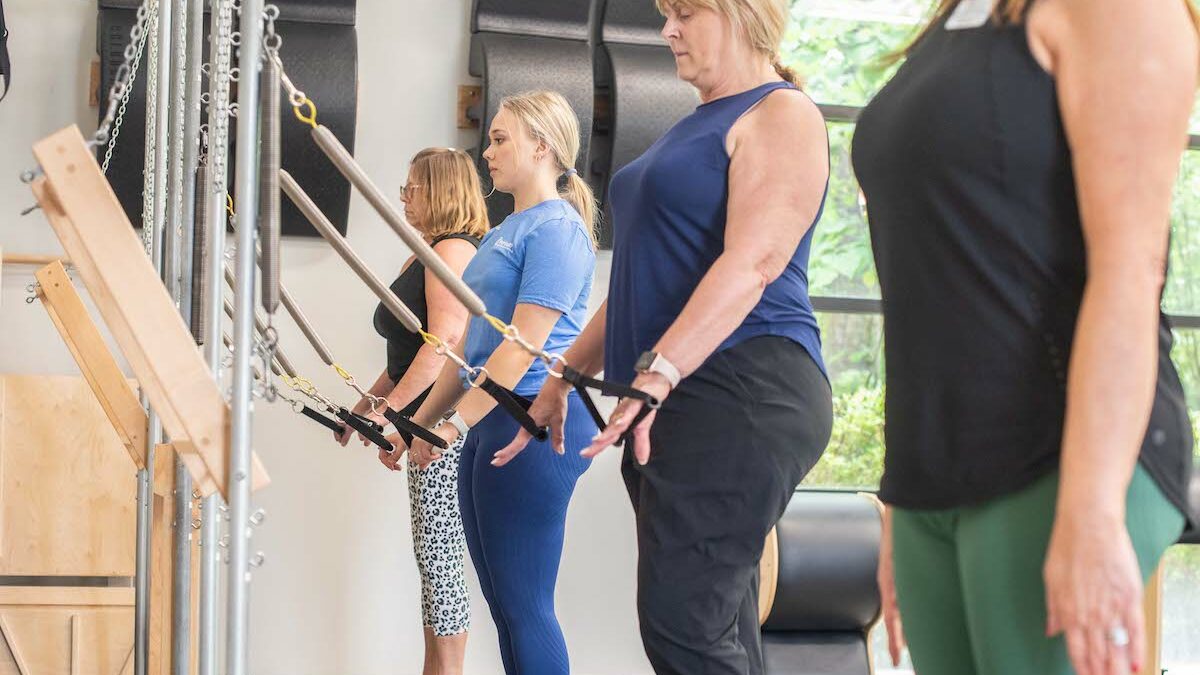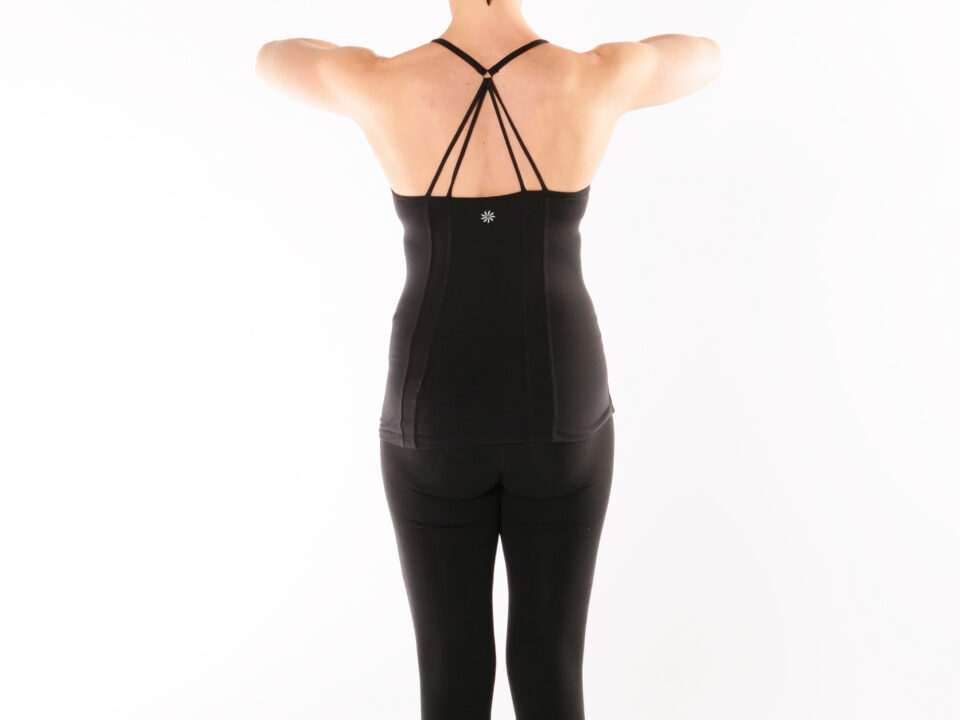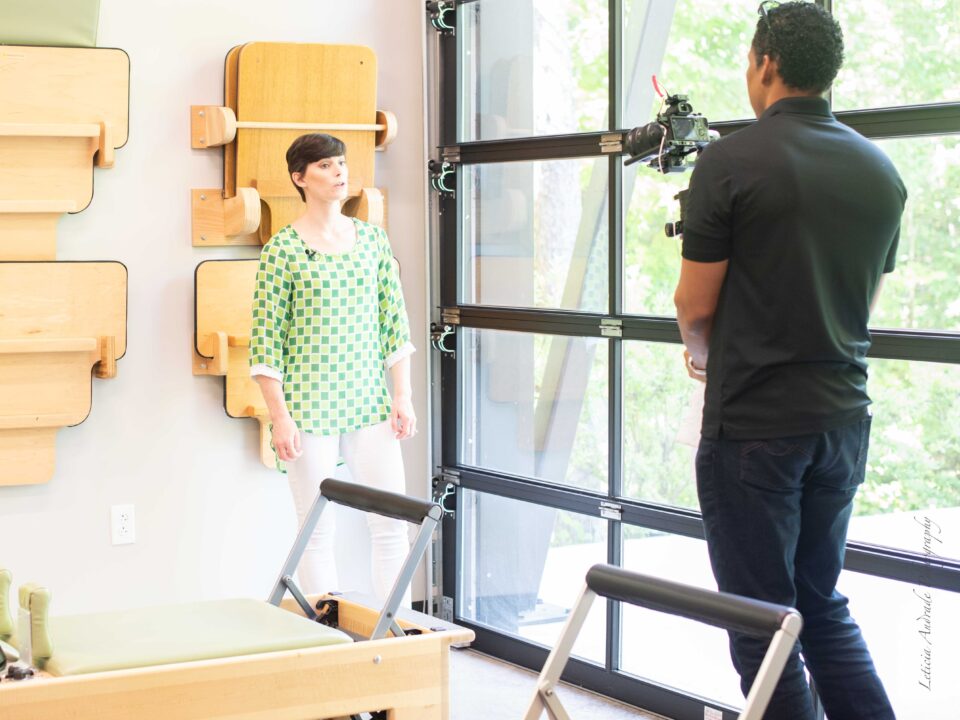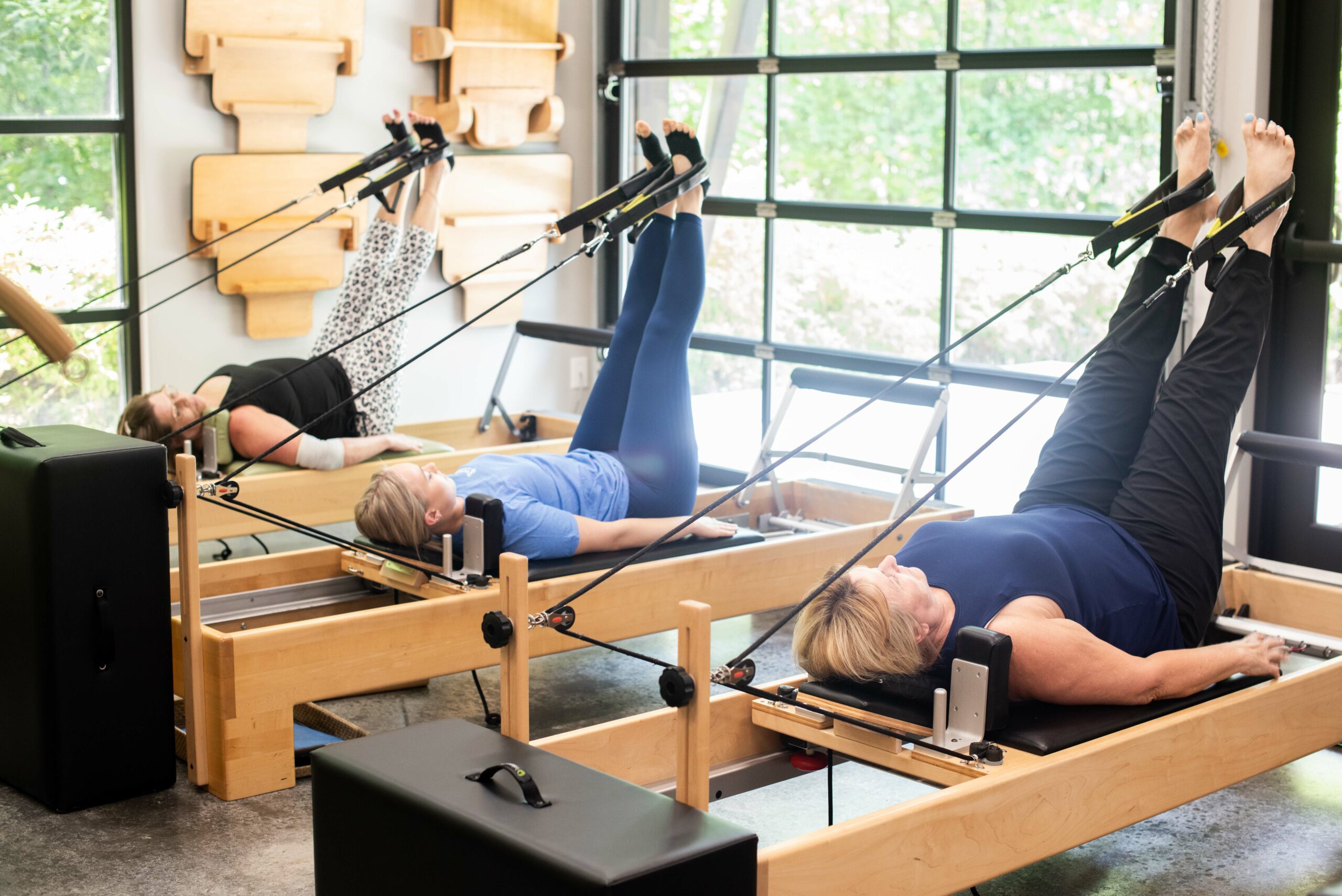- Mon - Fri
7.30 AM – 5.30 PM
Other hours upon request - 770-487-1931
How you can get strong with Pilates

Pilates is well known as a popular mind-body exercise. Often thought of as a means to gain flexibility and lean limbs. But how does it par in building strength? In this blog post, we’ll cover what Pilates strengthens, how long it takes and where weights fit into a Pilates class.
What does Pilates strengthen?
Pilates builds balanced core strength, which lays the foundation for full body strengthening. Pilates emphasizes the importance of a healthy and robust core, or powerhouse, as referred to in the method. The core is not merely the abdominal muscles; while it is a part of it, the powerhouse also includes the deep pelvic floor, abdomen and lumbar spinal muscles. Visually speaking your powerhouse extends from the pelvic area to the top of the ribcage.
With a strong, supple powerhouse the body is stabilized to build strength in the upper and lower extremities. A detailed and thorough method, Pilates works every part of the body from the toes and metatarsals to the neck and head.
How long does it take to build strength with Pilates?
Consistency is key to achieving strength in Pilates. Most Pilates teachers recommend taking Pilates thrice a week for 50-60 minutes. Some Pilates enthusiasts prefer to break up their Pilates practice into shorter, daily sessions lasting 20-30 minutes. Whichever you decide, begin with small, achievable goals you can maintain. Gradually increase the intensity and frequency of your practice.
Joseph Pilates, the founder of the method, famously and accurately said;
“In 10 sessions you’ll feel the difference; in 20 sessions you’ll see the difference; and in 30 sessions you’ll have a whole new body”.
Does Pilates use weights for strength training?
A Pilates session may or may not include weights. When incorporated into a workout, you can expect hand weights to be light, ranging from one to eight pounds often staying closer to two or three pounds. Ankle weights are occasionally used during lower body mat work as well.
However, Pilates primarily relies on resistance from your body and spring tension on the apparatus. Props can also be a source of strength-building resistance, such as a magic circle and thera-bands.
Does Pilates require strength?
In short, yes Pilates requires strength. As mentioned earlier, strength in Pilates is based on the powerhouse, which energies the entire body for a balanced, safe and efficient workout.
However, don’t let that intimidate you from starting. Pilates is an extremely adaptable modality that serves the ultimate beginner to the experienced athlete. Joseph Pilates worked with a wide range of people from wounded military servicemen in WWI to the elite ballerinas of the New York City Ballet.
Will Pilates get easier?
Pilates is an extensive method with hundreds of exercises, variations and multiple pieces of apparatus. With consistent practice, some principles of Pilates will get easier, such as connecting to your core, breathing and understanding where your body is positioned in space. These mind-body connections will start to become second nature.
However, in many ways, Pilates becomes increasingly difficult over time. Why? Once the foundation is established, the body can work into deeper layers of muscle with intention and precision. This further challenges both the body and mind. Additionally, movement becomes more complex, challenging coordination, concentration and strength. Resistance can be increased or decreased to be an added challenge as well.
Over time, you can expect Pilates to not only become increasingly challenging but expect to see increased benefits as well.
If you’re ready to strengthen your body and mind with Pilates, ProHealth Physical Therapy and Pilates is here. Offering classes both online and in person, you’re sure to find the right class for you.




